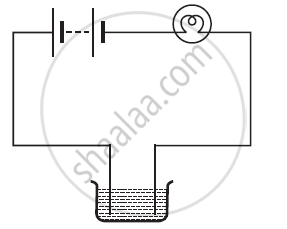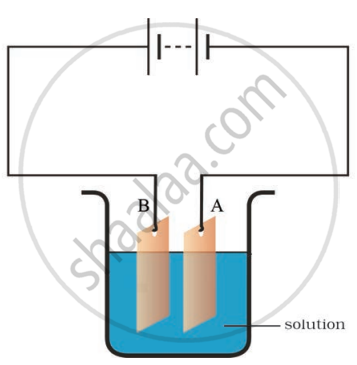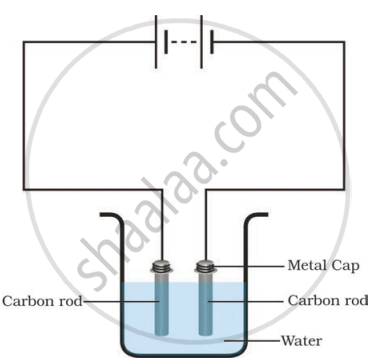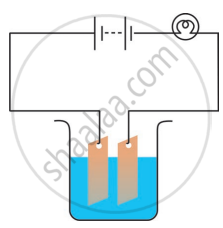Advertisements
Advertisements
Question
A tester is used to check the conduction of electricity through two liquids, labelled A and B. It is found that the bulb of the tester glows brightly for liquid A while it glows very dimly for liquid B. You would conclude that ______.
Options
liquid A is a better conductor than liquid B.
liquid B is a better conductor than liquid A.
both liquids are equally conducting.
conducting properties of liquid cannot be compared in this manner.
Solution
A tester is used to check the conduction of electricity through two liquids, labelled A and B. It is found that the bulb of the tester glows brightly for liquid A while it glows very dimly for liquid B. You would conclude that Liquid A is a better conductor than liquid B.
Explanation:
The amount of current flowing through a conducting solution depends on the conductivity of the solution. With more conductivity, more current passes through the solution and vice versa. Hence, liquid A's conductivity is greater than liquid B's.
APPEARS IN
RELATED QUESTIONS
When the free ends of a tester are dipped into a solution, the magnetic needle shows deflection. Can you explain the reason?
The bulb does not glow in the setup shown in figure list the possible reasons. Explain your answer.

Does pure water conduct electricity? If not, what can we do to make it conducting?
In case of a fire, before the firemen use the water hoses, they shut off the main electrical supply for the area. Explain why they do this.
A child staying in a coastal region tests the drinking water and also the seawater with his tester. He finds that the compass needle deflects more in the case of seawater. Can you explain the reason?
Is it safe for the electrician to carry out electrical repairs outdoors during heavy downpour? Explain.
Which one of the following solutions will not conduct electricity?
Observe the circuit given in the figure.

Boojho set up this circuit for purification of copper. What will be the nature of – (a) plate A (b) plate B (c) and the solution.
Explain the process of purification.
Boojho made the circuit as shown in the figure. He wanted to observe what happens when an electric current is passed through water. But he forgot to add a few drops of lemon juice to water. Will it make any difference to his observations? Explain.

Observing that the bulb does not glow in the circuit shown in Fig. (A) Boojho changed the circuit as shown in Fig. (B). He observed deflection in the magnetic compass.
 |
 |
| A | B |
- What does the deflection in magnetic compass indicate?
- Why did the bulb not glow in Fig. (A)?
- What would be the effect of increase in the number of turns in the coil wound around the magnetic compass in Fig. (B)?
- What will be observed if the number of cells are increased in the circuit shown in Fig. (B)?
